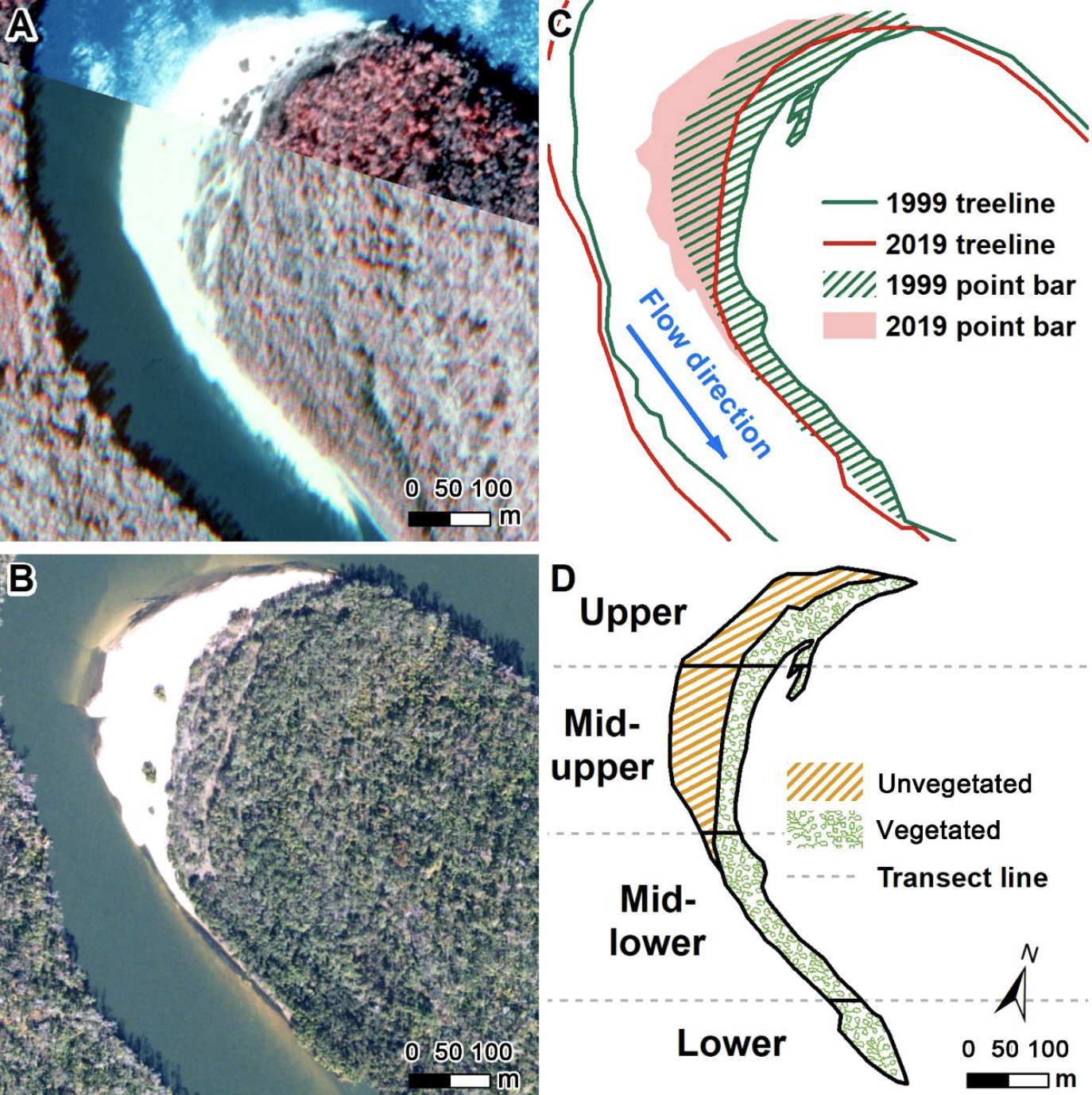
CHEN, MOSSA – Floodplain characteristics affect woody vegetation regeneration on point bars of a coastal plain river recovering from anthropogenic disturbances
Yin-Hsuen Chen, Joann Mossa, Kunwar K. Singh
Article first published online: 4 November 2022
DOI: https://doi.org/10.1002/eco.2504
ABSTRACT: Floodplain characteristics contribute to the natural regeneration of vegetation and help facilitate their ecosystem recovery, but vary within and between river systems and more so in a river system recovering from anthropogenic disturbances. Here we explored the floodplain characteristics that contribute to the woody vegetation regeneration on point bars of the mid-Apalachicola River in Florida, USA, which has been passively recovering for over two decades after dredging and disposal activities ended. The woody vegetation regeneration on point bars was analyzed using 1999 and 2019 aerial imagery and later divided into zones and sections. We processed datasets and developed models for data products representing floodplain characteristics. Later, we analyzed noncollinear floodplain characteristics using a random forest (RF) regression model. The top characteristics that contributed to the RF model include vegetation density, distance-to-seeding source, and bend curvature. Findings suggest that high vegetation density contributes substantially to woody vegetation regeneration. The negative relationship between distance-to-seeding source and vegetation regeneration shows the importance of seeding availability. The bend curvature corresponds with the highest regeneration in the lowermost section of point bars. Our results signify the importance of maintaining healthy vegetated corridors as a buffer to reinforce the vegetation community and potential seed source for passive recovery. Future active restoration can consult our findings of floodplain characteristics to mitigate and restore the anthropogenically disturbed floodplains.
Read the full publication at Ecohydrology.